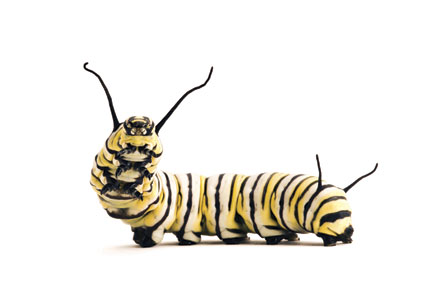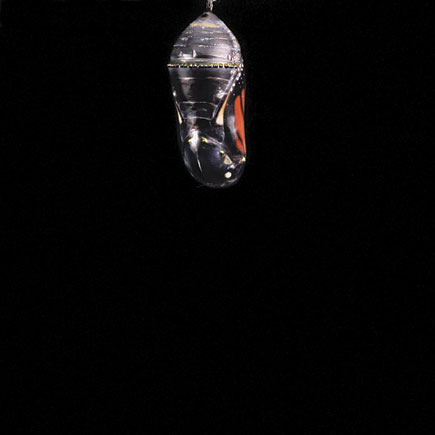Wow! The way you have explained about the life cycle of Monarch Butterflies really impressed me. I have seen the pupa of Monarch Butterfly at my home and observed it till it become the butterfly. I think that is the most beautiful scene I have ever seen.
side socket review
Emerging Beauty
Emerging Beauty
Time Lapse Techniques Capture Miracles
by David FitzSimmons
My wife, Olivia, is a naturalist. In one of her educational programs, she teaches children about the life-cycle of monarch butterflies. To show their four stages of life, she begins by collecting eggs from milkweed plants. Olivia keeps leaves from these plants in our refrigerator, feeding the foliage to the gradually-developing caterpillars. The larvae pass through five “instars” over a period of about two weeks, after which the approximately 2” long caterpillars pupate, each forming a chrysalis. Inside the green case—actually the exoskeleton of the pupa—the incredible transformation into an adult butterfly occurs, a process that takes about two more weeks. We enjoy watching for chrysalises that turn from green to transparent, a sure sign that a butterfly is about to break free.
 |
Many emerge while we are away, but one Sunday morning we were fortunate enough to notice a chrysalis that had become as clear as a window. The opportunity for a unique set of pictures arrived. Transferring the clear chrysalis to my studio, I arranged the following gear: a black backdrop, two monolights, and a macro lens attached to my Nikon D2x, both attached to my Gitzo tripod. I placed the pupa in front of a black muslin background and arranged two monolights on either side, one slightly above the other. I manually focused my 105mm f/2.8 macro lens, using f/22 for maximum depth of field, and set my white balance to flash.
 |
|
|
 |
|
|
 |
|
|
 |
|
|
One monolight was tied directly to the camera using a PC cord; the other was set to flash via its built-in slave tripper, which allows it to fire wirelessly whenever it “sees” a flash from another source. I programmed the intervalometer on the D2x to fire every 15 seconds, estimating that I could capture high-quality JPEGs for about 4 hours on my largest compact flash card. I hoped my timing was right.
Just over four hours and exactly 999 shots later, our preparation for this opportunity paid off: we were lucky enough to get these 10 images, taken over the span of two minutes and fifteen seconds and showing one of the most remarkable metamorphoses found in nature.
 |
|
|
 |
|
|
 |
|
|
 |
|
|
 |
|
|
 |
|
|
- Log in or register to post comments













































